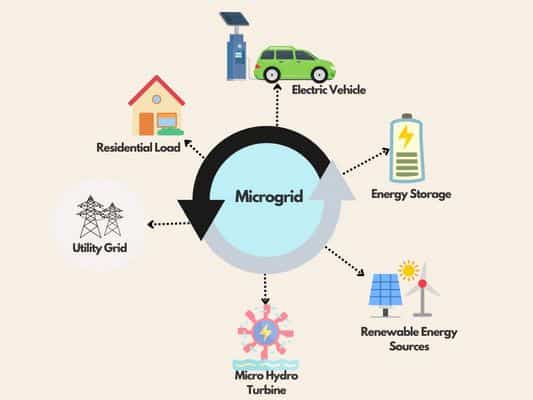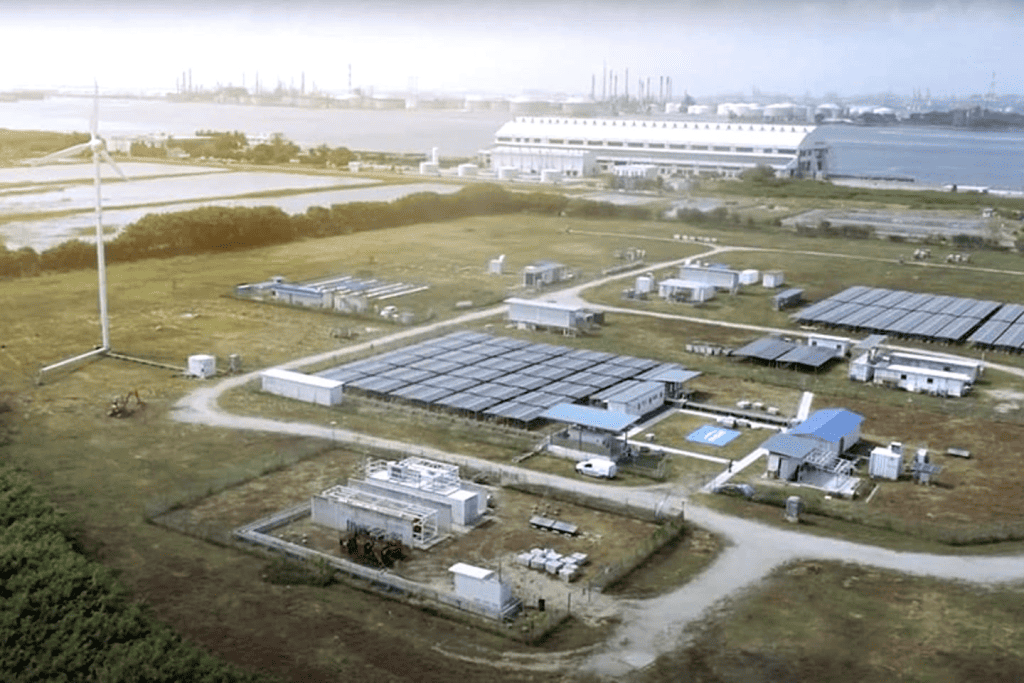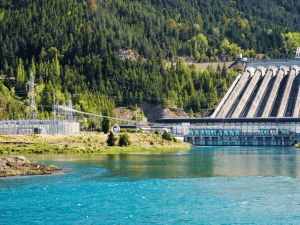Micro Grid: Everything You Need To Know About Micro Grid Power Systems
A microgrid is a decentralized electricity network that has the capability to function independently or in cooperation with the primary utility grid. It typically consists of distributed energy resources (DERs) such as solar panels, wind turbines, energy storage (such as batteries), and backup generators. The microgrid can function autonomously, providing power to a specific community or facility even when the main grid is down.
As our world continues to evolve, so do our energy needs. The ever increasing demand for electricity poses significant challenges, especially for those who lack access to traditional power grids and for regions vulnerable to natural disasters and blackouts. In response to these challenges, a revolutionary concept has emerged —microgrids. In this blog, we will delve into the world of microgrid power systems, exploring what they are, how they work, their benefits, and their potential to transform the future of energy distribution.
What Are Microgrid Exactly?
Microgrids are localized power systems that are independent or can connect to a larger power grid. Unlike conventional centralized power grids, microgrids are designed to provide energy generation, distribution, and consumption capabilities at a smaller scale, catering to specific communities, buildings, or facilities. These self-sustaining networks can operate autonomously, relying on various energy sources, including renewable energies like solar, wind, hydro, energy storage, geothermal, and biomass, as well as traditional fossil fuels.
How Does a Microgrid Work?
The core principle of a microgrid is its ability to operate both in conjunction with and independently from the main power grid. During normal circumstances, a microgrid can function as an integrated part of the larger grid, drawing and supplying power as needed. However, when the main grid experiences disruptions, a microgrid can automatically disconnect and function in island mode, relying solely on its localized energy sources to meet the demand of the connected users.
Microgrids employ advanced control systems that monitor energy supply and demand in real-time. These control systems optimize energy flow, prioritize energy usage, and manage energy storage to ensure efficiency and reliability. Additionally, microgrids often integrate energy storage technologies to store excess energy for use during peak demand or when the primary energy sources are unavailable.

The Benefits of Microgrid Power Systems
Enhanced Energy Resilience
One of the most significant advantages of microgrids is their ability to enhance energy resilience. By decentralizing power generation and distribution, microgrids reduce dependency on centralized grids, making communities more resilient to power outages caused by natural disasters or other disruptions.
Improved Energy Efficiency
Microgrids enable localized energy production, which minimizes transmission losses and increases overall energy efficiency. This localization also facilitates the integration of renewable energy sources, reducing reliance on fossil fuels and promoting sustainability.
Cost Savings
Microgrids lead to cost savings for communities and facilities by optimizing energy usage and leveraging cost-effective renewable energy sources. They can also participate in demand response programs, which incentivize consumers to reduce electricity usage during peak demand periods.
Environmental Benefits
As microgrids prioritize the adoption of renewable energy sources, they contribute to reducing greenhouse gas emissions, mitigating climate change, and fostering a cleaner and greener environment.
Energy Independence
Microgrids empower communities and facilities with a degree of energy independence. By generating and managing their electricity, they can mitigate the impact of energy price fluctuations and external supply disruptions.
Integration of Renewable Energy
Microgrids facilitate the integration of renewable energy sources like solar, wind, and hydropower. By utilizing these clean energy sources, they can reduce greenhouse gas emissions and contribute to climate change mitigation efforts.
Island Mode Operation
Microgrids can operate in “island mode,” which means they can be disconnected from the main grid and operate independently, ensuring continuous power supply in the event of grid failures.

The Future of Microgrid Power Systems
As the global population continues to grow, and climate change becomes a pressing concern, microgrid power systems offer a glimpse into the future of energy distribution. With their ability to provide reliable, resilient, and sustainable energy, microgrids have the potential to transform the way we consume and manage electricity.
Communities and regions vulnerable to power outages can benefit from the localized and self-sustaining nature of microgrids. Additionally, as technology advances and economies of scale improve, the cost-effectiveness and efficiency of microgrid installations are expected to increase dramatically, making them a more viable option for widespread adoption.
What Microgrid Services Do We Provide at Pioneer Infrastructure?
Pioneer Infrastructure offers comprehensive assistance for every step of your microgrid venture. Our expertise covers a wide range of services:
- Providing consultancy to design your system and offer continuous guidance throughout the project’s lifespan.
- Modernizing existing equipment.
- Conducting startup and commissioning procedures to inspect and test equipment for optimal setup and functionality.
- Providing ongoing maintenance to ensure smooth operations and successful outcomes.
No matter where you are in your microgrid journey, we are here to help. Contact us today to learn more about our services and get started on your microgrid journey.
Conclusion
Microgrid power systems represent a remarkable advancement in energy distribution, addressing the challenges posed by centralized grids and the increasing demand for electricity. By promoting energy resilience, efficiency, cost savings, and sustainability, microgrids offer a promising solution to transform the way we power our world. As we move forward, embracing this innovative technology can pave the way toward a more reliable, greener, and prosperous energy future for communities across the globe.
Date Posted: August 2nd, 2023





